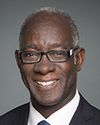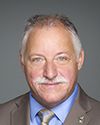Oh, oh!
Evidence of meeting #44 for Veterans Affairs in the 44th Parliament, 1st Session. (The original version is on Parliament’s site, as are the minutes.) The winning word was research.
A video is available from Parliament.
Evidence of meeting #44 for Veterans Affairs in the 44th Parliament, 1st Session. (The original version is on Parliament’s site, as are the minutes.) The winning word was research.
A video is available from Parliament.
8:05 p.m.
Some hon. members
Oh, oh!
8:05 p.m.
Conservative

Terry Dowdall Conservative Simcoe—Grey, ON
I want to thank everyone for being here tonight and for your testimony.
In the first hour of testimony, one thing we heard was that female veterans seem to have a hard time finding employment after service and a lot of times it's part time. Does VAC have a hiring target for all veterans, first of all? If so, what is it?
8:05 p.m.
Director, Research, Department of Veterans Affairs
I'm not aware of that information, but we will provide a response to the committee.
8:05 p.m.
Conservative

Terry Dowdall Conservative Simcoe—Grey, ON
As a follow-up to that, could you break it down for us? If there's a hiring target for females at Veterans Affairs, perhaps we could have a number on that for our study, because I think it's quite important. We have to lead by example, quite frankly. I come from the municipal world, where I was a volunteer firefighter. We made sure we said to everyone, because every other company wanted to.... We had to make sure we were doing the exact same thing. I want to make sure that we follow suit and hire as many women as we can, and hopefully we can hire more.
Another thing we heard in the first hour was something I can't quite understand. It seemed entirely illogical to me. DND and VAC have different standards for determining which injuries are service-related and which ones are not. I would think there would be a pretty seamless transition from one to the other. I wonder if you can give us the idea or thoughts behind that.
8:05 p.m.
Director, Research, Department of Veterans Affairs
I don't have specific eligibility criteria or the knowledge to analyze the differences between how VAC and how DND assess those, so we'll need to provide a response back to the committee.
8:05 p.m.
Conservative

Terry Dowdall Conservative Simcoe—Grey, ON
I'm just wondering if you've heard of that before. My ears perked up when I heard it earlier in testimony here. I thought it seemed quite strange. You'd think the two government ministries would be succinct in how someone is injured and how it would relate. Do you not get lots of complaints about that?
8:05 p.m.
Director, Research, Department of Veterans Affairs
Because we don't do health care administration as part of the department's mandate, the services we provide are fundamentally different. During military service, the CAF health service provides care directly, so the types of services and interactions they would have with their serving members would be different from what we're dealing with now, because we're not having conversations with veterans as a health care provider. I would imagine that those conversations would look different. Specifically on the complaints you're referring to, I'm not familiar with those.
8:10 p.m.
Conservative

Terry Dowdall Conservative Simcoe—Grey, ON
Okay.
I have a follow-up. I know we had a comment earlier from the ombudsperson about this, but since I've been on the committee, I've received lots of calls. People look you up, they know you're on the committee and they want to ask questions. The one thing that's been consistent—and I'm not saying the department is this way—is the perception that lots of people seem to be afraid. They don't want to talk about the issues they have. They're afraid. I'm just wondering why you think they have that feeling.
8:10 p.m.
Director, Research, Department of Veterans Affairs
I have heard there are people who perhaps would be eligible for services from Veterans Affairs, but they don't come forward for a variety of different reasons. One thing we want to determine in our qualitative research is what those barriers are—whether they're perceived barriers or real barriers—and whether there's a different approach we can take to change the culture of the services we provide to make it more welcoming for women veterans, in particular, to come forward.
I think we're actively looking at those kinds of changes. That's part of the reason we have implemented trauma-informed mandatory training across the department and across all of the frontline, veteran-facing services. That way, if there are things we're doing as a department that are keeping people away or perhaps creating a distance there, we can recognize and identify them and find solutions.
8:10 p.m.
Conservative

Terry Dowdall Conservative Simcoe—Grey, ON
You've been working on that, then. That number will probably get a lot better. Is that what you're telling me?
8:10 p.m.
Conservative
8:10 p.m.
Liberal

The Chair Liberal Emmanuel Dubourg
Thank you so much.
Let's go to Darrell Samson for five minutes, please.
8:10 p.m.
Liberal

Darrell Samson Liberal Sackville—Preston—Chezzetcook, NS
Thank you.
First, I would like to say that I'm extremely happy the committee has decided to dedicate this study to women, marginalized military women and marginalized Canadians. I think this is so essential. I've been on this committee for six years, and I don't know how many times I've heard the challenges that women face in the military and when they're out, and how difficult the transition is. In some areas, it's two or three times more difficult.
I'm really happy we're able to dig deep in that area. I think the 20 meetings will allow us to drill down deeper, if I can say that. I'm sure members of all parties around this table will focus on what's important, which is identifying some of the challenges and trying to find solutions and recommendations so we can make life better for those who are serving and those who have served.
Thank you both for your presentations and for some of the information we've gathered.
Last week in Quebec City I went to see a play called Projet Monarques at the Théâtre des Petites Lanternes.
What I observed for an hour was exactly what Colonel Jardine shared, which is that the military is your life when you're in the military, and when you leave the military, you seem to lose part of your family and you lose your identity.
I would ask both of you to comment on whether you've seen that through research and whether you have any information on that piece to begin with.
8:10 p.m.
Director, Research, Department of Veterans Affairs
I'll start by saying that, to date, in the research we've been able to conduct—especially when we're talking about services delivered by Veterans Affairs—we have a limited reach. The census counted approximately 75,000 women veterans in Canada, and we serve only a fraction of them. There's a broad proportion of the women veteran population that, despite our best efforts, we really can't say we understand very well.
It's important for us to reach out to the community and stakeholders to get their voices. I'll give Dr. Garland Baird a moment to talk about how we're going to do that.
8:15 p.m.
Senior Researcher, Department of Veterans Affairs
We are really excited that we will be engaging with veterans and veterans groups in the community across all of Canada in the coming months. We are looking at women veterans and equity-deserving groups.
We are interested in understanding lived experiences. These are things like how women veterans experience issues around identity. Is that different from how men might experience it? We are also looking at what supports they feel serve them the best, not just from Veterans Affairs Canada but in their communities. What does that look like?
We aim to also identify not just the deficits but the strengths, because we really believe we can leverage various partnerships that VAC has with other federal departments. VAC does not have a full mandate for all of the well-being of veterans—health care, for example—but we can work with our partners. We can only do that by speaking directly to veterans and communities and by sincerely listening to what their experiences are so we can move forward with identifying where gaps exist.
8:15 p.m.
Liberal

Darrell Samson Liberal Sackville—Preston—Chezzetcook, NS
I agree with you fully that it's about partnerships. Talk to me a bit about partnerships. What partnerships do we have in this country? We have some great universities and great research. Is there some gathering of research around women in the military in the country and outside the country with some best practices?
8:15 p.m.
Liberal

The Chair Liberal Emmanuel Dubourg
Thank you, Mr. Samson.
Dr. Baird, you have a quick 10 seconds, please.
8:15 p.m.
Senior Researcher, Department of Veterans Affairs
We have strong relationships with academic institutions through CIMVHR, which is the Canadian Institute for Military and Veteran Health Research.
8:15 p.m.
Liberal

The Chair Liberal Emmanuel Dubourg
Thank you so much.
I am going to give the floor to Mr. Desilets, but I have to interrupt.
The House of Commons is calling for votes, so I have to tell members of the committee that we have about 12 minutes left for this meeting. I'd like to know if you want to continue until the end and then vote, but I have to have unanimous consent for that. If not, I have to stop right away.
8:15 p.m.
Bloc

Luc Desilets Bloc Rivière-des-Mille-Îles, QC
I would propose that we finish the two turns before going to vote.
8:15 p.m.
Liberal